Homemade Italian Seasoning (Easy to Make!)
Updated May 09, 2025, Published Apr 16, 2025
This post may contain affiliate links. Please read our disclosure policy.
This homemade Italian seasoning blend combines the perfect balance of herbs in classic Italian cooking. It’s aromatic, earthy, and full of depth, ideal for seasoning meats, pasta sauces, roasted vegetables, and dressings. Skip the store-bought version and make this fresh, flavorful herb mix at home!
You’ll also love my Italian Sausage Seasoning blend.
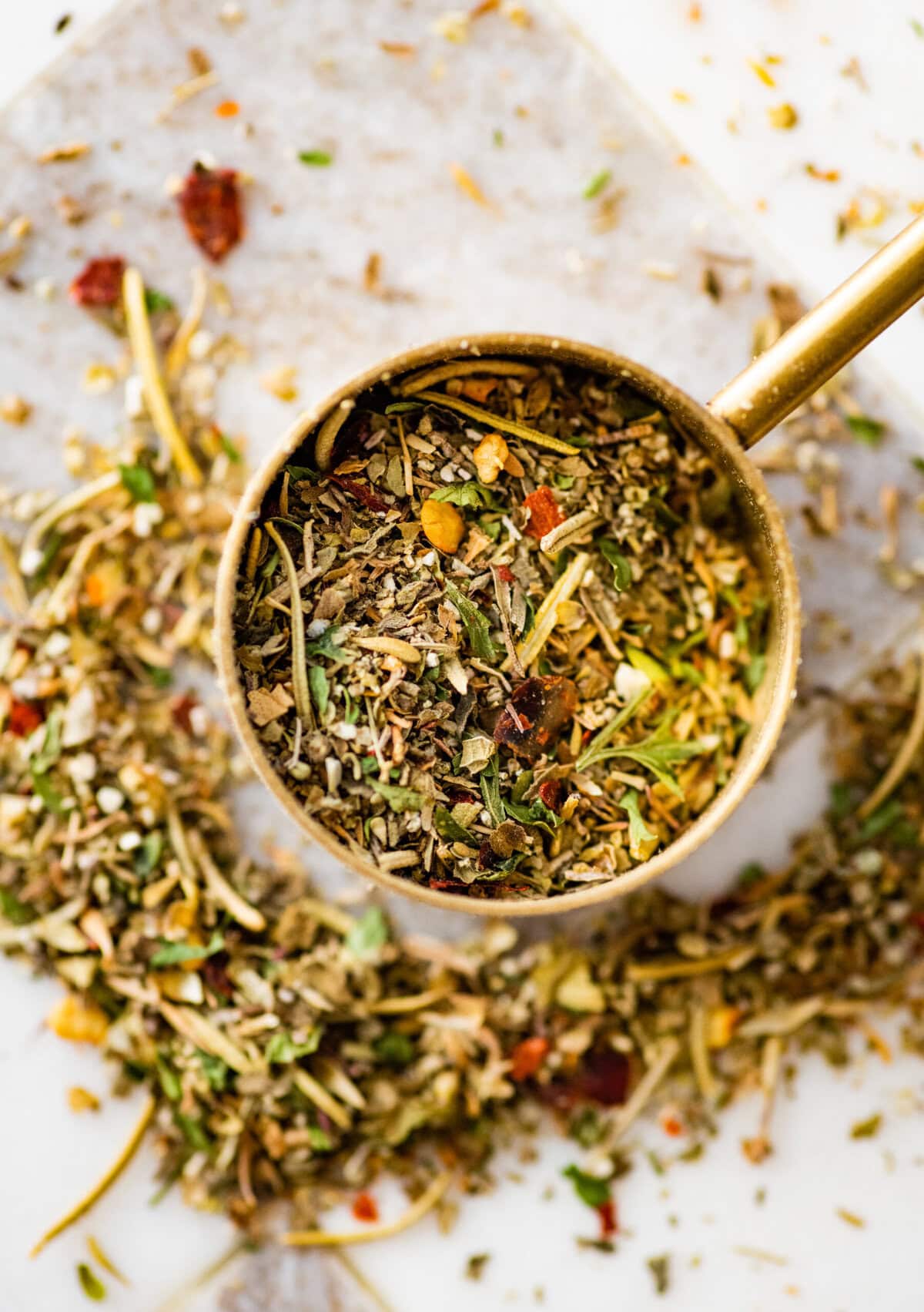
What is Italian Seasoning?
Italian seasoning is a savory, aromatic blend of dried herbs commonly used in Italian and Mediterranean cooking. It’s perfectly earthy, slightly sweet, and subtly peppery flavors enhance everything from classic pasta al forno and bruschetta chicken, to oven-baked chicken breasts and Tuscan broccoli.
While not traditionally used in Italy as a single spice blend, these herbs capture the essence of Italian flavors—basil, oregano, rosemary, thyme, marjoram, sage, and parsley—all working together to create depth and warmth in every Italian dish. Once you start making your own blend, you’ll never go back!
Table of Contents
Ingredients (What is In Italian Seasoning?)
You’ll only need a handful of Italian herbs to make this perfect seasoning blend.

- Basil – Sweet, slightly peppery, with a fresh, aromatic fragrance. Essential in Italian dishes, especially tomato-based sauces.
- Oregano – Bold, earthy, and slightly bitter with a hint of lemon. Gives depth to sauces, meats, and pizza.
- Rosemary – Piney, woody, and intensely fragrant. Adds warmth and depth to roasted meats and vegetables.
- Marjoram – Mild, slightly floral, and sweeter than oregano. A delicate touch for soups, dressings, and meats.
- Thyme – Subtle minty and lemony notes with an earthy backbone. A classic herb for slow-cooked dishes.
- Parsley – Fresh, slightly grassy, and bright. Brings balance and freshness to the blend.
- Sage – Warm, slightly peppery, and earthy. Perfect for seasoning poultry and hearty dishes.
- Red Pepper Flakes (Optional) – Adds a touch of heat and spice, enhancing the overall depth of the seasoning.
See recipe card for quantities.
How To Make Italian Seasoning Blend
Combine the dried herbs in a bowl, stir, and transfer to an airtight container. No fancy equipment is needed—just fresh, flavorful herbs blended in minutes. No fillers, no preservatives—just pure Italian goodness!
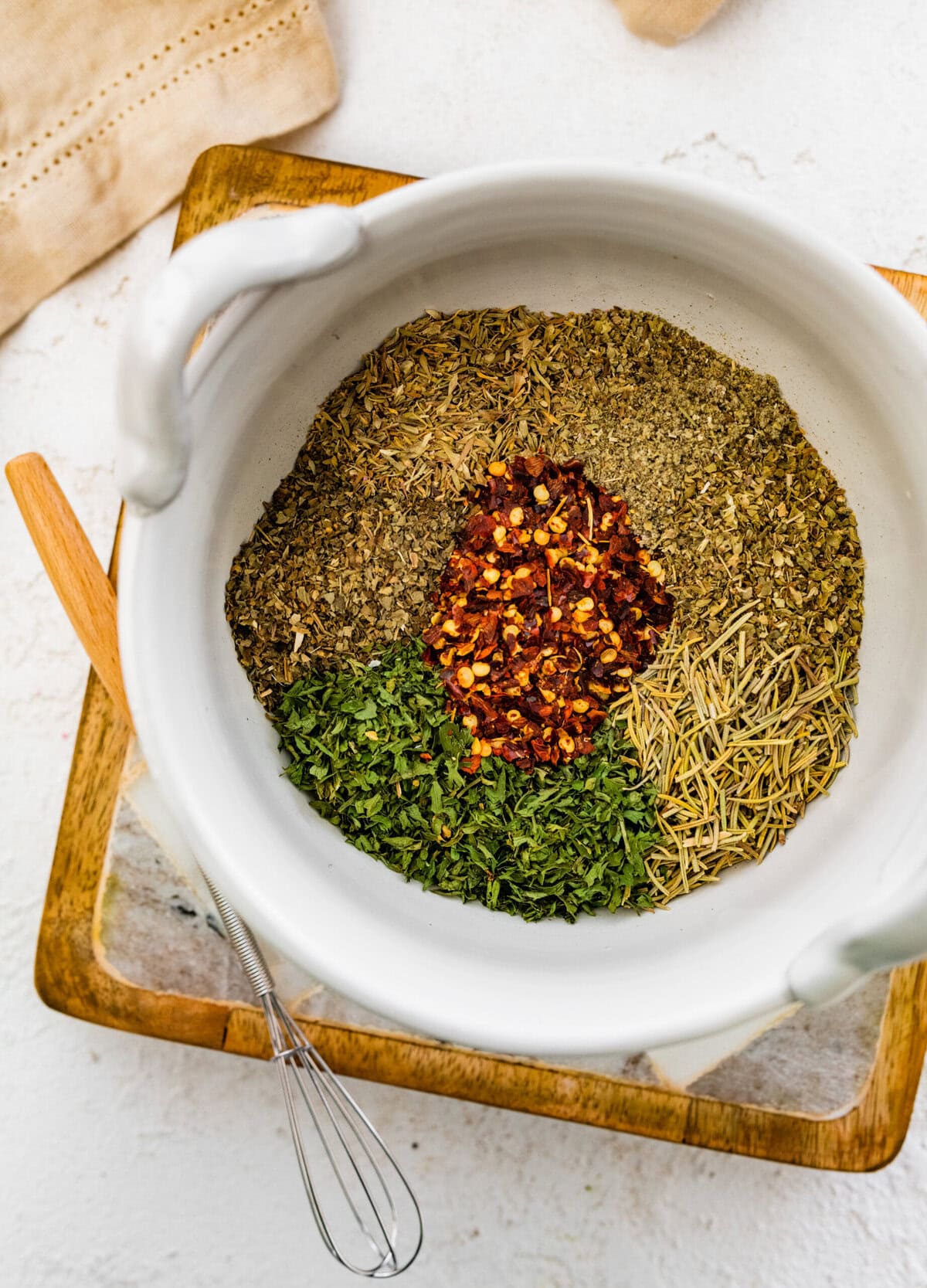
Add all the dried herbs to a small bowl or jar.
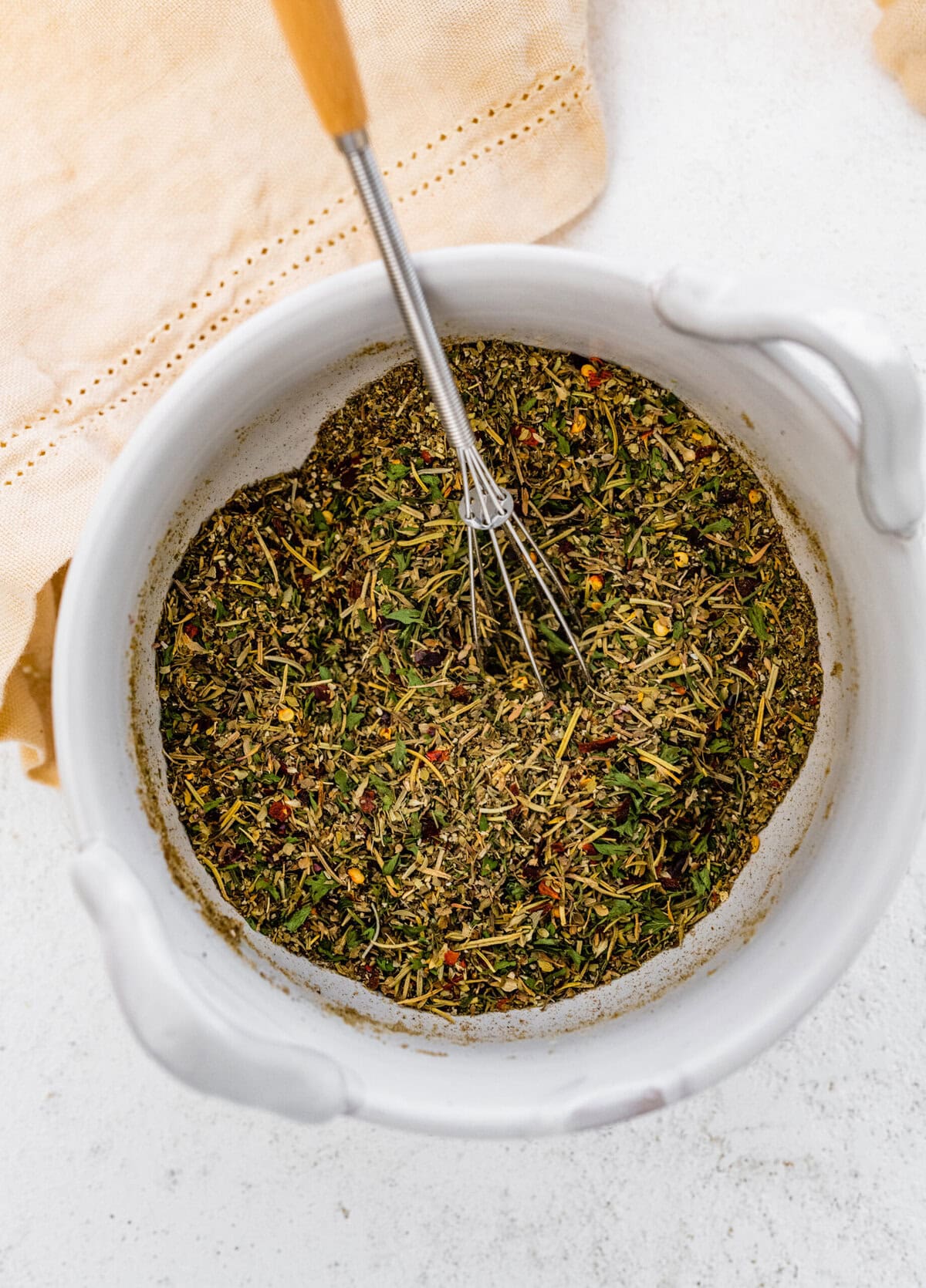
Stir, whisk, or shake to combine. Optional for a finer blend, mix in the food processor.

I like to store mine in a glass jar.
Substitutions and Variations
This homemade Italian seasoning mix is versatile and customizable—adjust it to match your favorite Italian-inspired dishes!
- No Marjoram? Use extra oregano for a similar earthy flavor.
- No Sage? Swap with a little more thyme or rosemary.
- Prefer a Milder Blend? Reduce rosemary and omit red pepper flakes.
- Want a Zesty Kick? Add a pinch of lemon zest or dried fennel seeds.
- Infuse– Stir in a little garlic powder or onion powder for extra depth.
- Custom Spice Level– Adjust red pepper flakes to taste—add more for heat or none for a mild version.
How to Store
Store your Italian seasoning in an airtight container, small jar, or Mason jar with a lid in a cool, dark place (like a pantry or spice drawer) to preserve freshness. Avoid moisture and direct sunlight. For optimal flavor, it is best used within 6 months!

How to Use Italian Seasoning
This Italian seasoning is a fragrant, versatile, and authentic kitchen staple. Enjoy the homemade touch in all your favorite dishes!
- Spaghetti Sauce & Roman-Style Pizza: Add a teaspoon to marinara, Bolognese (Italian ragu), penne pomodoro, or pizza sauce.
- Meats & Poultry: Rub onto baked chicken breasts at 425 F, prime rib, or pork chops before roasting or grilling.
- Roasted Vegetables: Toss with olive oil and sprinkle over zucchini, eggplant parm, or crispy Italian potatoes.
- Salad Dressings & Marinades: Mix with olive oil and vinegar for an Italian orange vinaigrette. You can also sprinkle it over this creamy Italian dressing.
- No Knead Ciabatta Bread & Butter: Stir into melted butter or olive oil for a delicious bread dipping oil.
- Soups: Add a dash to your favorite Italian soup recipes.
- Burgers: Add the seasoning and mix it with the patties just like these ground chicken burgers.
Perfect for adding classic Italian flavor to any dish!
More Condiments
Try our homemade sauces and seasonings!
My Pro Tip
Recipe Tips
- Use High-Quality Dried Herbs – Fresher dried herbs mean better flavor! Check expiration dates and buy from a trusted source.
- Crush for More Aroma – Lightly crush rosemary and oregano with your fingers or a mortar and pestle to release essential oils.
- Customize to Taste – Adjust herbs based on your preference—skip sage for a milder blend or add red pepper flakes for heat.
FAQ’s
Yes, but fresh herbs contain moisture and won’t store well long-term. Use three times the amount of fresh herbs for the same intensity.
No, this blend is salt-free, making it versatile for different recipes. Add salt separately as needed.
Start with 1 teaspoon per recipe, then adjust to taste.
Herbs de Provence includes lavender, which Italian seasoning does not, making it more floral in flavor.
Yes! Make a big batch and store it for easy seasoning whenever you need it.
💙 MADE THIS RECIPE AND LOVED IT? 💙 Please leave a ⭐️STAR rating and COMMENT below- I love connecting with you! Tag me with your creations on Instagram and find me on Pinterest.
Homemade Italian Seasoning Recipe

Ingredients
- 2 tablespoons dried basil
- 2 tablespoons dried oregano
- 2 tablespoons dried rosemary
- 2 tablespoons dried marjoram
- 2 tablespoons dried thyme
- 2 tablespoons dried parsley
- 2 tablespoons dried sage
- 1 tablespoon dried red pepper flakes, optional, for heat
Instructions
- Mix the herbs: In a small bowl, combine all the dried herbs and red pepper flakes (if using).
- Blend for finer texture (optional): If you prefer a more uniform texture, pulse the mixture in a spice grinder or crush it slightly using a mortar and pestle.
- Store properly: Transfer the seasoning to an airtight container or spice jar. Store in a cool, dark place for up to 6 months for the best flavor.
Notes
Meats & Poultry: Rub onto chicken, beef, or pork before roasting or grilling.
Roasted Vegetables: Toss with olive oil and sprinkle over zucchini, eggplant, or potatoes.
Salad Dressings & Marinades: Mix with olive oil and vinegar for an Italian vinaigrette.
Bread & Butter: Stir into melted butter or olive oil for a delicious dipping sauce. This Italian seasoning is a fragrant, versatile, and authentic kitchen staple. Enjoy the homemade touch in all your favorite dishes!
Nutrition
Nutrition information is automatically calculated, so should only be used as an approximation.


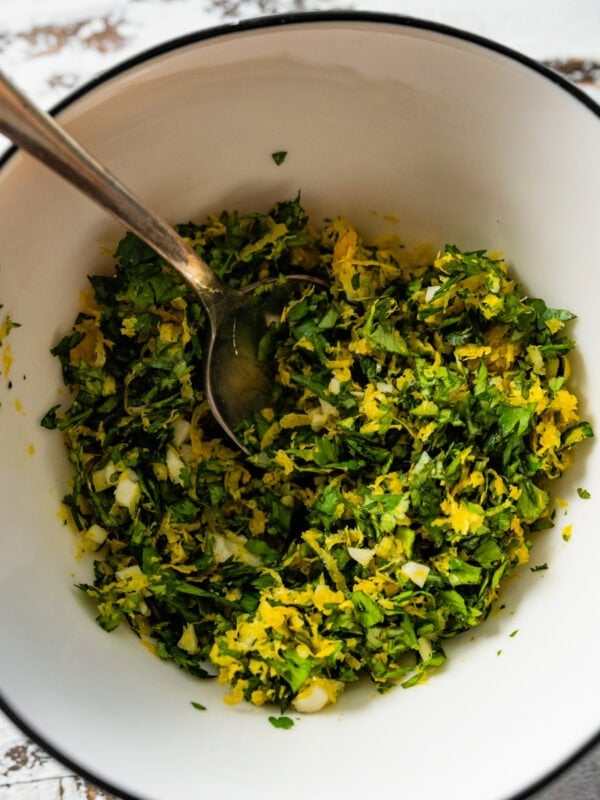
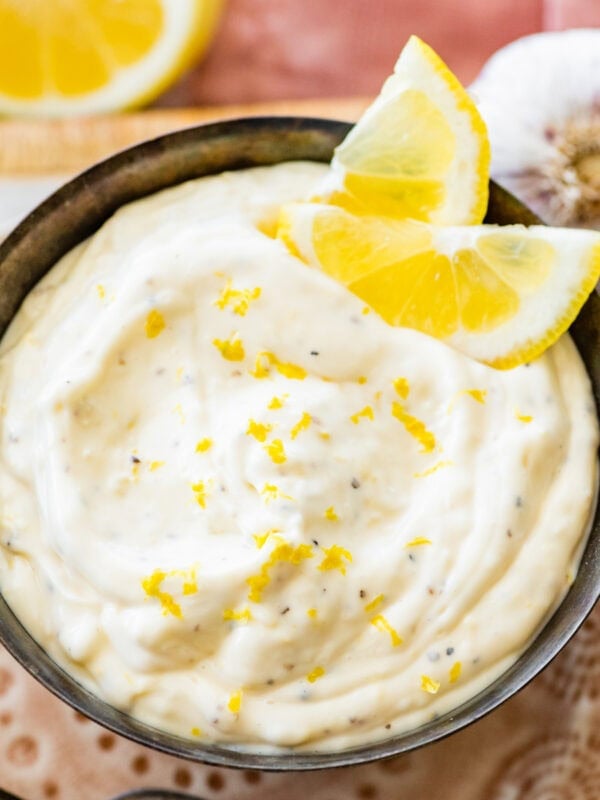
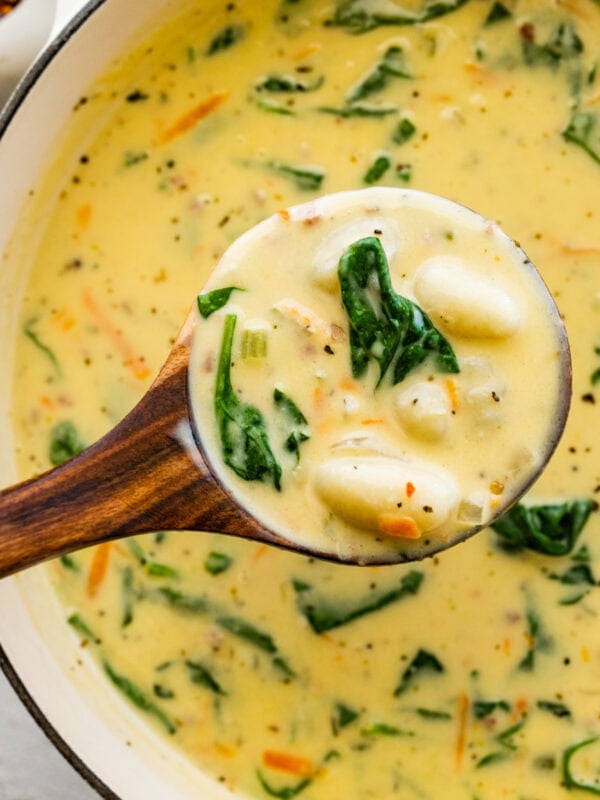
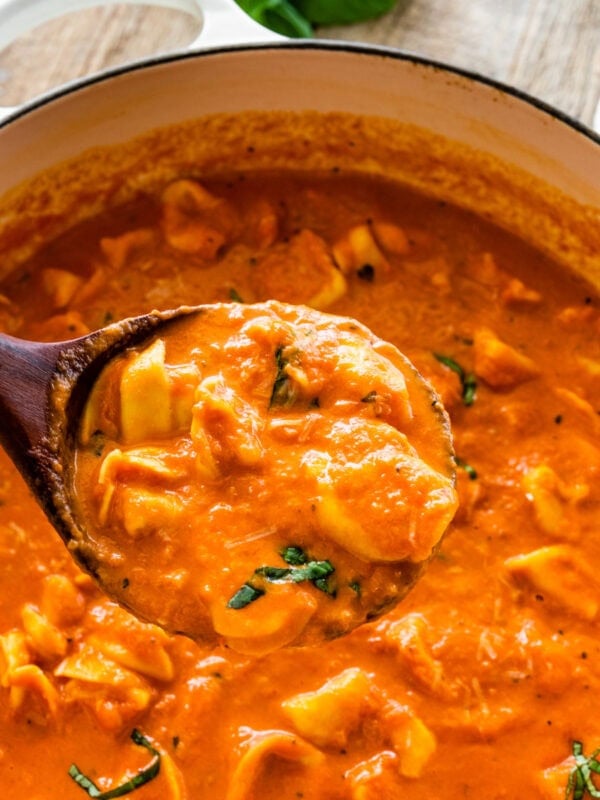
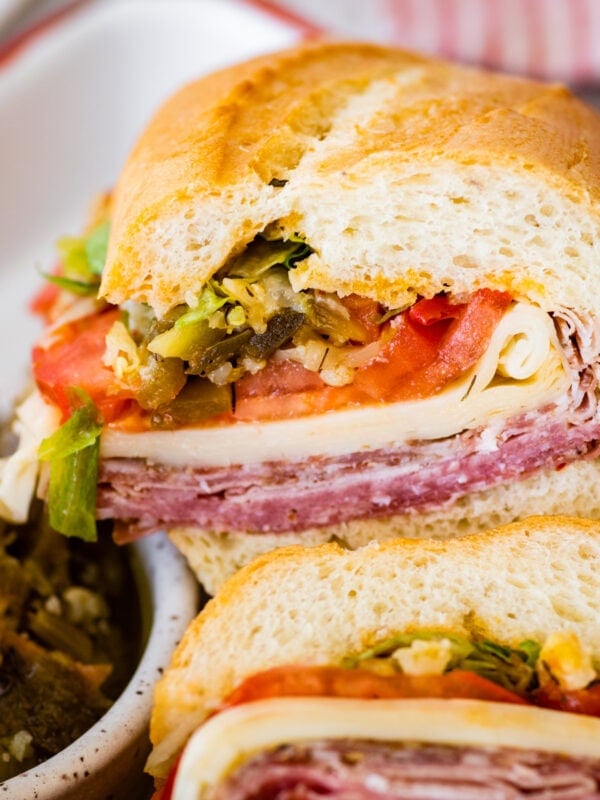
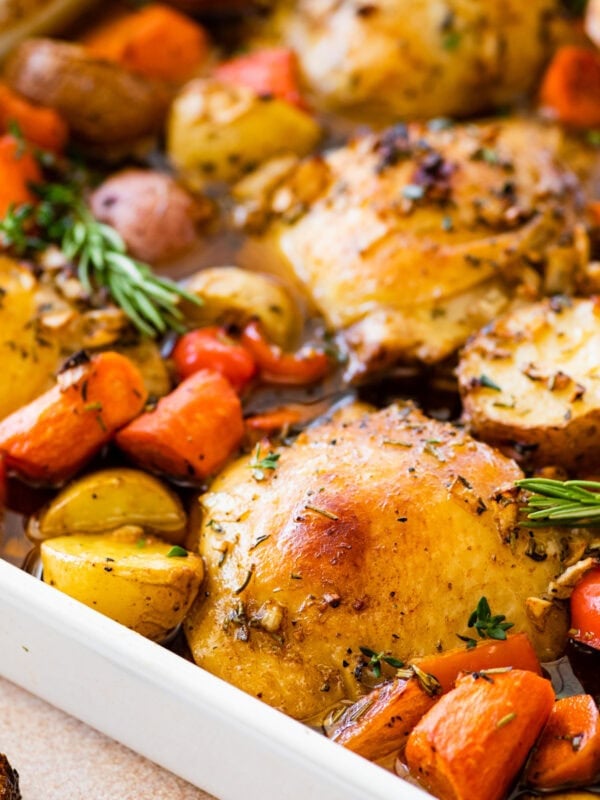




What brand of seasonings do you feel works the best to make this homemade Italian Seasoning?
Hi! This depends on what part of the world you live in as brands do vary. I like to get organic if possible, enjoy!
I’ll never buy the premade seasoning after making this homemade Italian seasoning at home. It’s incredibly easy, and I can control the freshness and quality! Enjoy.